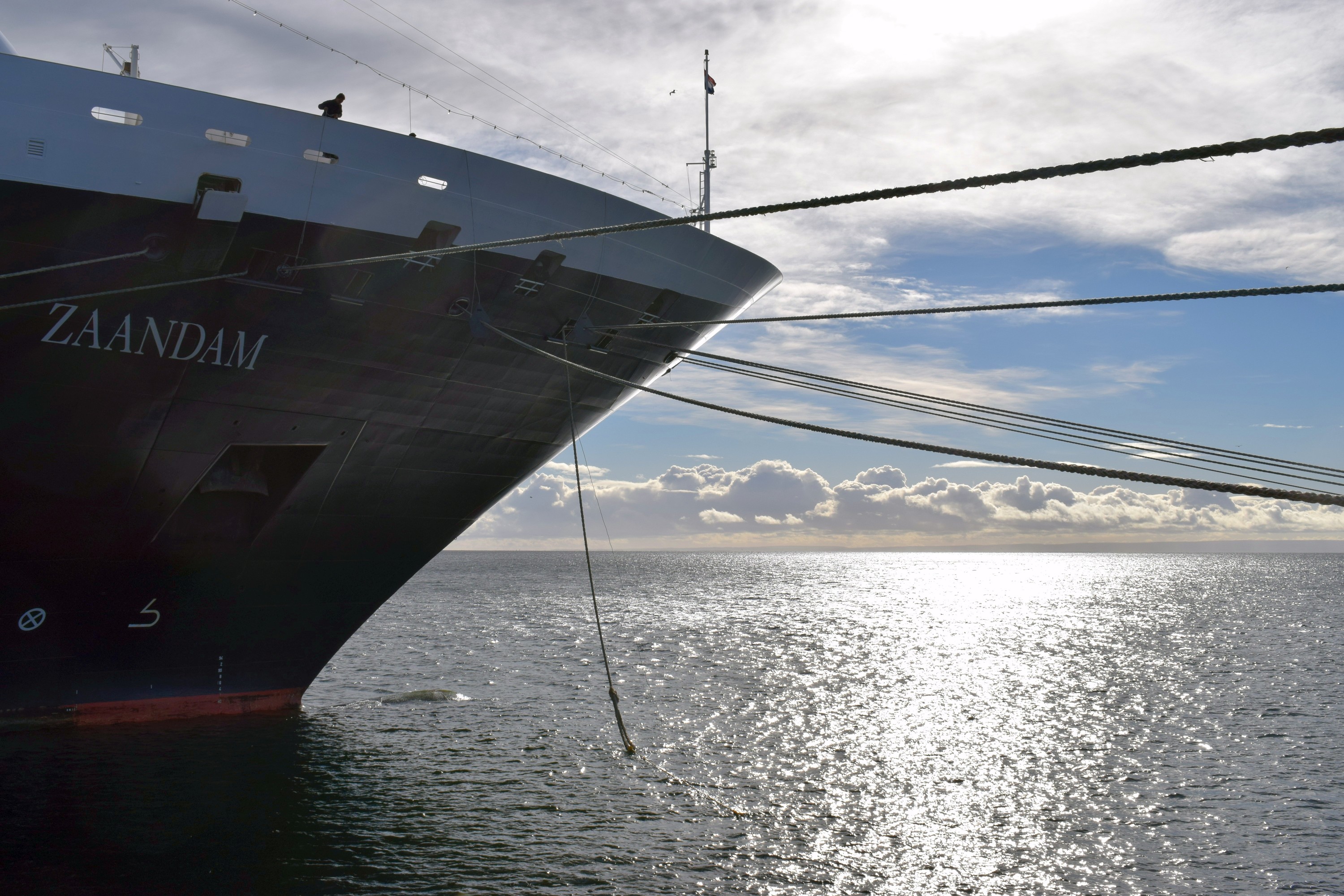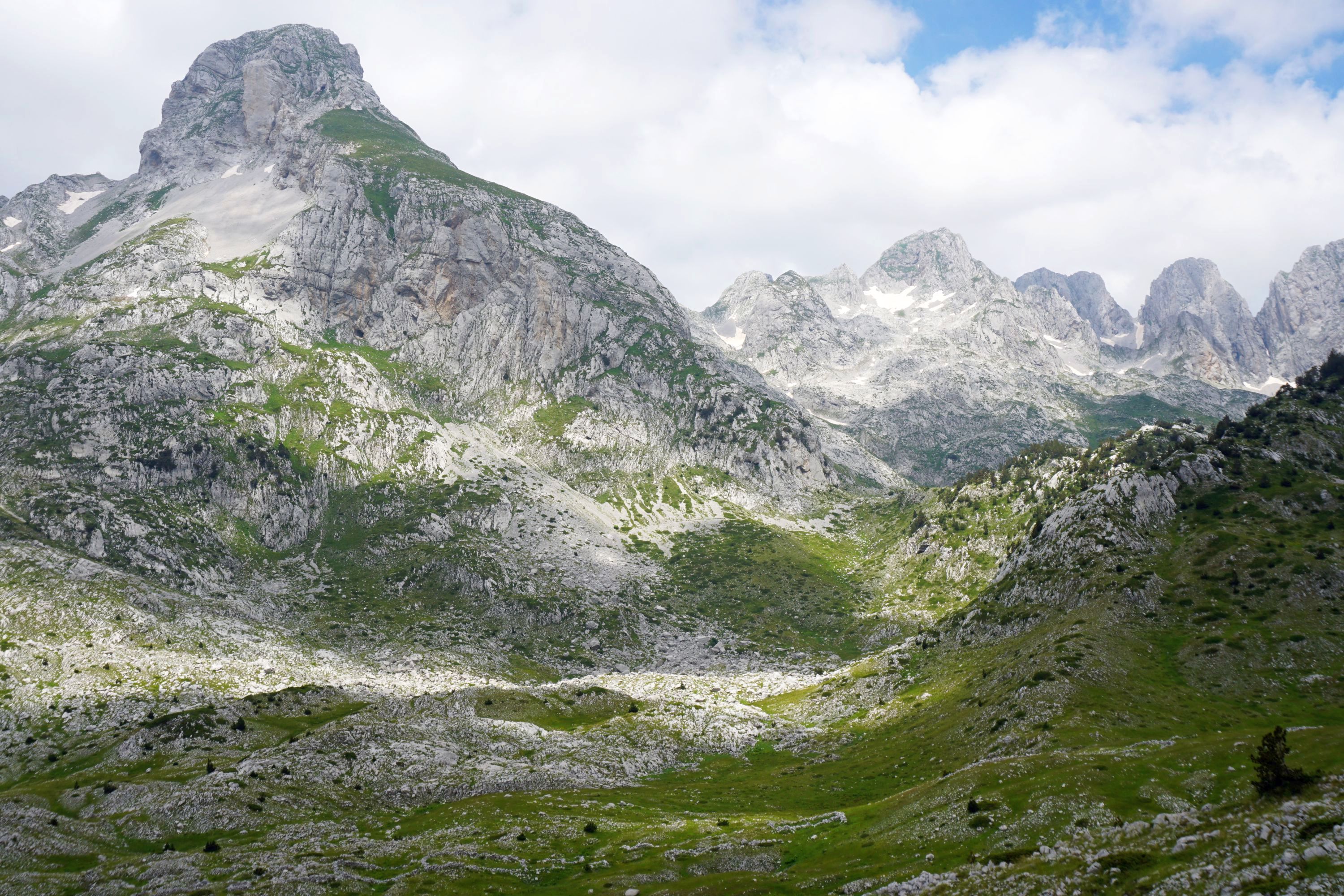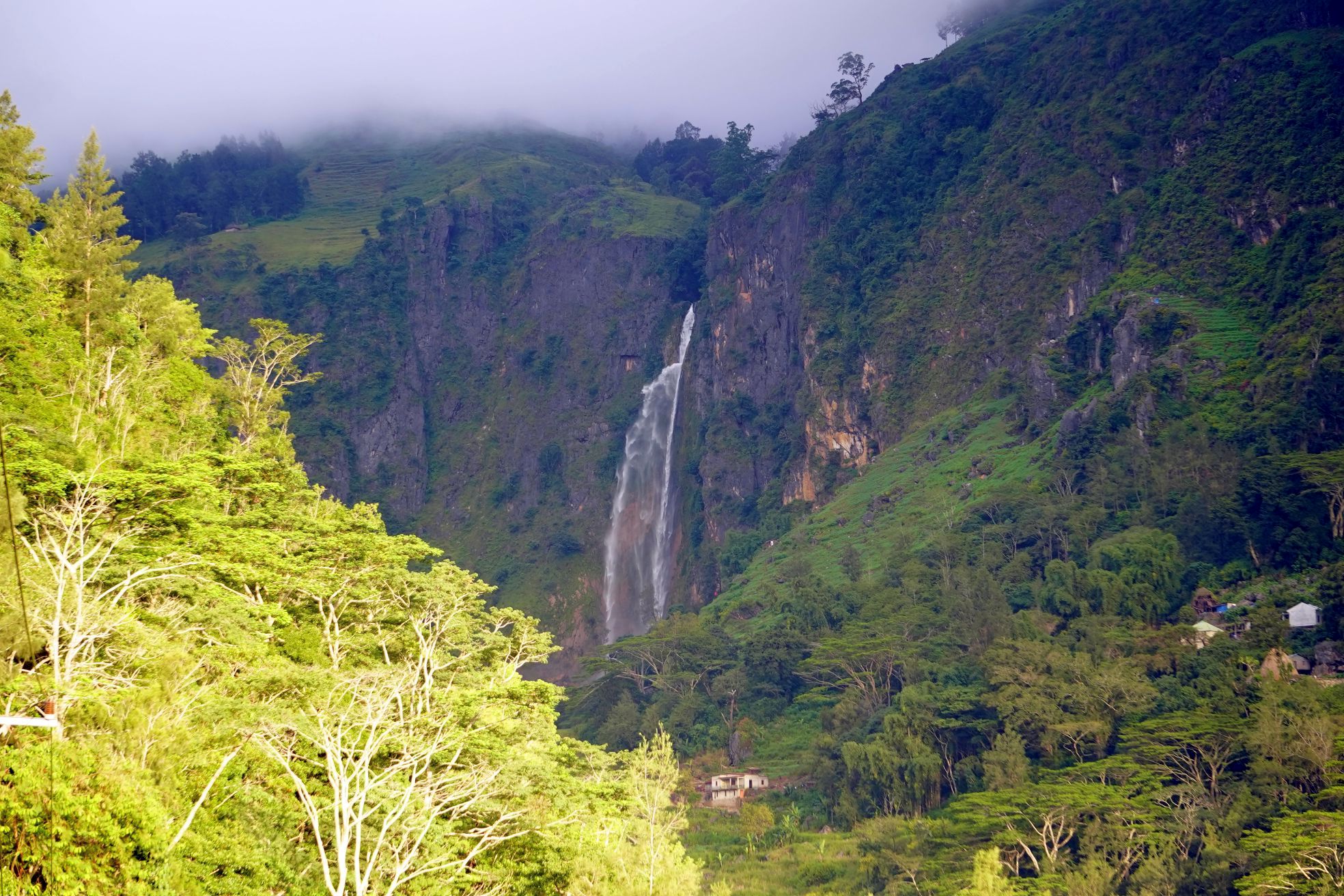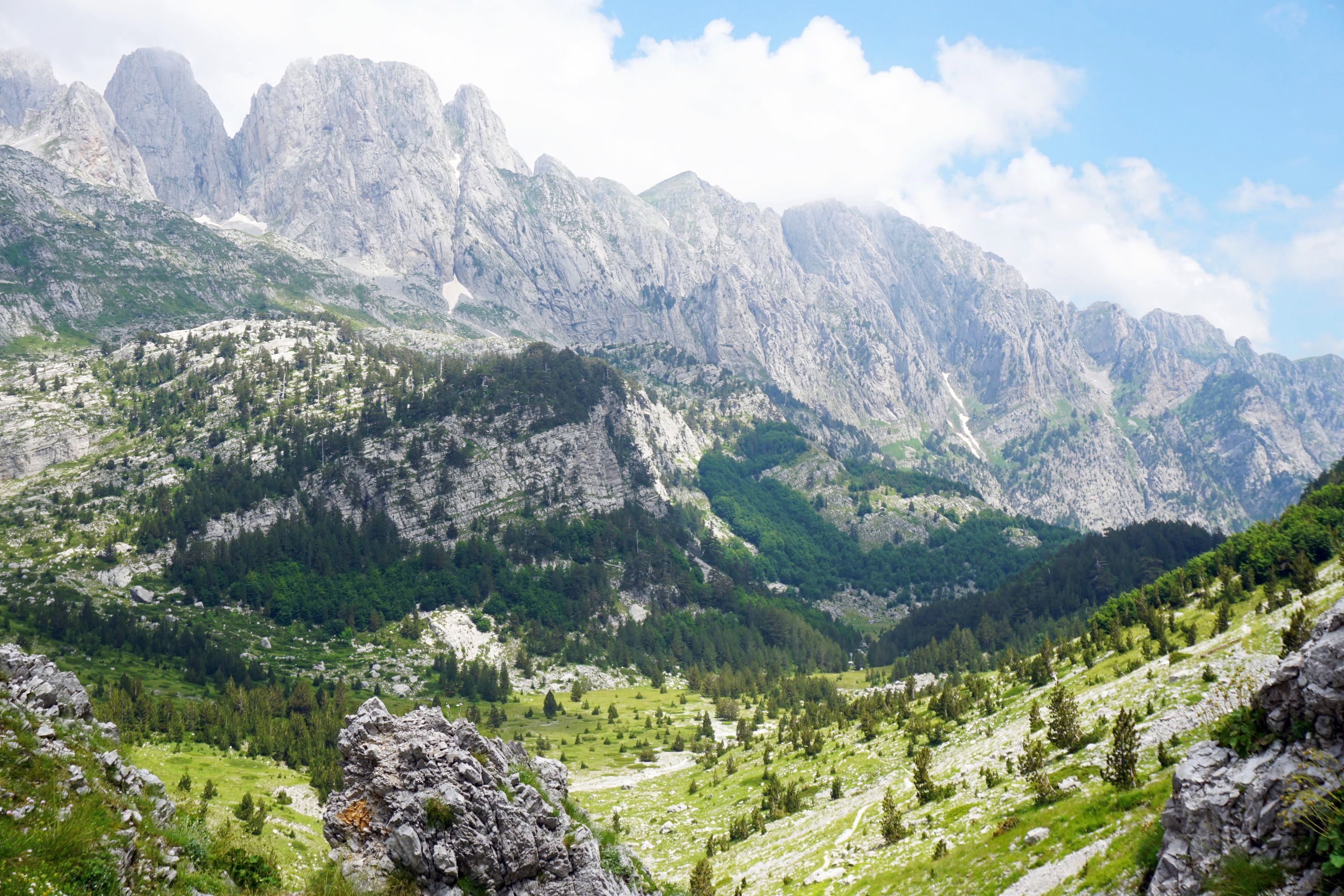I was somewhat apprehensive about my first cruise, but a friend who has been on more than 30 thought that this one, 22 day South America & Antarctica cruise with Holland America, was the best he’d been on yet, and it therefore seemed a good place to start. Also by ship is the only place to really visit most of the places on the itinerary, most obviously Antarctica, but also the Chilean fjords, Beagle Channel, and Falkland Islands.
My apprehensions included on-board demographics (there were very few people within twenty years of my age, mostly older, few teenagers), sea sickness (I’m usually fine but the Drake Passage and Southern Oceans can be notoriously rough), the length (I’ve found through experience that ten days is about the perfect length trip for me), and mainly the thought of being in a single space (the ship) for so long, particularly with over half the trip being at sea rather than at port (unlike Mediterranean or Caribbean cruises with port stops most days).
Upsides though, beyond visiting some incredible and relatively rarely visited parts of the planet, included travelling while you sleep being a very efficient way of getting around, unpacking my suitcase for possibly the first time when travelling, the food (good quality, plenty of it, and sufficient variety, though the desserts were my downfall), informative port talks, and the excellent lectures by the Antarctica team on-board (three experts in the wildlife, geology, and history of the South American and Antarctic regions – they were Kiwis from the University of Canterbury in New Zealand, though originally from Britain, America, and Argentina).
I’ve covered the trip in detail in other posts, but here is a quick overview of the cruise (taken December 2017), followed by some learnings / tips from my experience.
Day 1 – Santiago (San Antonio), Chile
Santiago is a great (if not immediately attractive) city, with very few tourists and many interesting things to see and do (particularly museums, which are mostly free, parks, and architecture), worth a day or two to explore. San Antonio, where we boarded, is an hour and a half (details below) south from Santiago. This cruise (and many others) used to leave from Valparaiso, an historic city slightly closer to Santiago, but recent strike action by the port has seen the number of cruise ships leaving from here drop to a quarter of previous levels. There is little to see in San Antonino, much better to stay and explore Santiago and head to the port late morning on the day of departure.
Day 2 – At Sea
Not much to see, but a chance to explore the m.s. Zaandam properly and enjoy the first of the series of talks on various aspects of South America and Antarctica. I spent the day trying to recover from the worst night’s sleep I’ve had for a long time, unusually rough seas (4-5m swells) and jet lag (16 hours from New Zealand) weren’t a good combination.
Day 3 – Puerto Montt, Chile
The first port of call, Puerto Montt itself doesn’t have much to do or see but only 20 minutes bus ride away is the wonderful Puerto Varas (City of Roses), a must visit. I just spent some time exploring there and came back to Puerto Montt and the ship, but many people on the ship did excursions to go further into the lakes region, either organised through Holland America (quality and convenience but you pay a steep price) or self organised (there were plenty of tours leaving from the port terminal, which were USD$40-$50 for most of the day). Note this, like many of the ports on this cruise, is a anchored rather than docked situation, i.e. the ship is too large to come to shore, and therefore tenders (life boats) are used to transport passengers from the ship to shore. It was pretty chaotic this first time, I spent an hour and a half (from 8am) waiting for a tender to shore. Those on Holland America organised tours have priority to disembark, others are advised to either get there early or after the tours have gone, though it did improve greatly on subsequent days. The evening cruising to Castro while the sun set was spectacular.
Day 4 – Castro, Chile
Most people, including myself, chose to explore the lovely town of Castro by foot. There were a few tours around Chiloe Island but most of the sights were in town. The tender ride to shore was short and scenic. The evening cruising past the Corcovado Volcano and Mt Melimoyu was quite a sight.
Day 5 – Puerto Chacabuco, Chile
I rather liked the tiny Puerto Chacabuco, though very much for the surrounding landscape than the built environment. A pretty comprehensive exploration of the place only took a couple of hours before returning to the ship for lunch, and an afternoon reading on deck and enjoying the views. There were tours available from the port for USD$40-$50 which went inland to the regional capital Coyhaique, more scenery, and apparently sunshine!
Days 6 & 7 – Chilean Fjords (Cruising)
Back to sea for a couple of days, with a number of talks taking place to help fill the time when I wasn’t outside enjoying the beautiful and immense Chilean fjords, and their glaciers, waterfalls and shipwrecks.
Day 8 – Punta Arenas, Chile
It was nice to return to land for our first docked port, though being 5km from the city centre meant it took longer to get there than by tender at previous ports. I’ve been to Punta Arenas before but hadn’t had the chance to explore it’s many museums, the best of which were closest to the port, the replica ships at Museo Naval Y Maritimo, and historic artifacts at Museo del Recuerdo.
Day 9 – Beagle Channel (Cruising) / Ushuaia, Argentina
A scenic start (from 6.30-8.30am) along the appropriately named Glacier Alley in the Beagle Channel before arriving at noon into Ushuaia, the most southerly city in the world. This fulfilled the ideal of cruising with a centrally located port to dock in, straight off the ship into the heart of town for a wander around.
Days 10 & 11 Sunday 24 – Cape Horn / Drake Passage (Cruising)
Bad weather (8-9m swells and 70mph winds) delayed our departure down to Antarctica by about a day, so we sailed in circles in a sheltered area of Tierra del Fuego National Park, which combined with coming down quite ill (unrelated to the sea conditions), didn’t make for a great couple of days. The bad weather did clear though and give us an unusually smooth crossing of the Drake Passage.
Days 12-15 – Antarctica
Arrived about 12 hours later than scheduled due to the weather, arriving about 6pm on Day 12, but the itinerary includes a buffer for this given the variability and importance of weather conditions down here. The wait was worth it though for calm seas and incredible scenery, when the weather was good. We also experienced for two days what Antarctica is normally like, with up to force 9 winds, rain and little visibility, but the memory remains of the glorious 36 hours of good weather we did have.
Day 16 – At Sea
Had gotten quite good at filling days at sea by this point of the trip, all about breaking it into chunks of about an hour (very About A Boy) with meals, talks, reading, sorting things on laptop, gym, and perhaps an evening movie.
Day 17 – Port Stanley, Falkland Islands
Basically a small British town that happens to be a long way from Britain, home to a great museum and perfect place to explore on foot for a few hours. Getting there was more of an issue though. It was a long tender ride (20-30 mins each way) and they had 4 tender boats running, each holding up to 60 people. So given up to 1,400 people onboard it works out as 4-5 hours to get everyone on shore. Average wait was two hours (30 mins for those on Holland America booked excursions), fine if you’re expecting that but they could have done a lot more to managed expectations and reduce frustrations. Still at least we managed to visit, apparently on about 30% of cruises they can’t even go ashore due to strong winds and seas.
Day 18 – At Sea
Uneventful but was smooth and finished with another lovely sunset.
Day 19 – Puerto Madryn, Argentina
Great place if you’re a wildlife fan (or Welsh), with many excursions out of the city. Less to do if you stay but it made for a good running spot and had the first free wifi (at the port and shopping centre) for nine days.
Day 20 – At Sea
Final sea day, filled as usual with lectures (history of Argentina and experience of working in Antarctica), a port talk (on Buenos Aires), reading (I read 24 books on this trip, had a bit of spare time…), gym, eating, blog drafting, photo sorting, and an interesting questions to the captain event (they have a three months on, three months off schedule, very appealing!). It was also the first night since Santiago that it was dark by the time I went to bed at half nine, the longest days of the year get very long the further south you go.
Day 21 – Montevideo, Uruguay
The perfect cruise stop with a central dock, right next to the old town which can be easily explored on foot, enjoying the architecture, museums (many of which are free) and endless street art. It’s a pretty grungy place but felt safe and very easy to navigate around with a grid system surrounded by water on three sides.
Day 22 – Buenos Aires, Argentina
Luckily I’d been to Buenos Aires a couple of years ago and seen pretty much everything I wanted to as today didn’t go entirely according to plan. The only place I’d not been to last time was Reservation Ecologica Costanera Sur, a large nature reserve on the Buenos Aires waterfront. With an 8km circuit around it, and only 2km from the ship, it looked like the perfect place for a run. Which unfortunately it wasn’t for a couple of reasons. Firstly it’s very boring running, flat, wide, and with a surprising lack of views, better suited to bikes. Secondly the occasional showers with a few mm of rain forecast turned out to be an hour long thunderstorm with torrential rain. Of course it started at the furthermost point of my run, and I took rudimentary shelter under some trees. Thankfully it eased off enough for me to get to the reservation entrance and information centre which provided more substantial cover to wait another half an hour through the worst of the storm, before heading back to the ship for a much needed shower (though I couldn’t get much wetter), lunch and afternoon onboard packing and getting sorted, before leaving in the evening a day early as my flight was at midnight.
Some learnings / tips from my experience for those thinking of, or are taking this cruise or others to Antarctica.
Cost
The major differences between this cruise and Antarctica specific cruises (90% of which leave from Ushuaia, Argentina) are the cost and comfort, and that you can’t set foot on Antarctica. Firstly the cost, while one of the most expensive trips I’ve been on (comparable to, but more comfortable than travelling around Iceland), was less than half the price of typical cruises to Antarctica. The Zaandam is one of the largest ships that visits Antarctica, and as such is more comfortable in rough seas, and has extensive on-board facilities (food, entertainment, space, private cabins). However Antarctic rules forbid any ships with more than 500 passengers from disembarking in Antarctica, and the Zandaam carries up to 1,400 passengers. Antarctic rules also restrict landing to no more than 100 people at any one time, so the ships that focus on Antarctica are usually between 100 and 200 passengers (taking it in turns to go on land). There’s a huge difference in economies of scale between 200 passengers and 1,400 passengers, accounting for the difference in price and comfort.
Cabin selection
The lower down and more central to the ship, the less movement you’ll feel in your cabin. The centre has the highest prices though so I compromised and went for level 1 toward the aft, but close to the stairwell so I could quickly get outside to the Lower Promenade Deck on level 3 if I spotted something (dolphins, rainbows, volcanoes). A cabin with a window (the majority of them) is good though I didn’t spend a lot of time in my cabin, there are plenty of other places around the ship to spend time (mine being in the library at a desk facing a window, the Mondriaan Lounge for talks, the Lido Market for food, and the Lower Promenade or aft top deck for photography). Be careful when booking as to what is above / below your room, if you’re close to the main theatre where they have shows every night you’re likely to hear something. Also if you’re at the front or rear of the ship you’re closer to the thrusters which can be noisy in the mornings when we arrive into ports.
Excursions
Holland America offer an extensive selection of excursions, all of which were very expensive (in my opinion and relative to those offered in ports), but they appeared well organised and had priority disembarking the ship. Penguin tours on the Falkland Islands sold out weeks in advance, others days in advance, others had spaces though all looked pretty popular judging by the number of people answering to excursion calls when waiting for a tender. I didn’t take any tours, which I was comfortable with, happy to explore places by foot at my own pace and get off the beaten track. In retrospect though if I were to have taken any I would have done the locally offered tours of the Lakes region from Puerto Montt, and inland from Puerto Chacabuco, both of which were USD$40-$50 for a full day tour with taxi / tour bus.
Getting to San Antonio
Much easier to get to than many people seemed to think, with stories of people hiring cars and private vans to get there, costing over USD$100. The hour and a half trip cost me USD$5 in a super comfortable air conditional bus, with a free transfer bus in San Antonio to take you from the bus station to port. I booked online (in Spanish, with some help from Google Translate) a ticket with Tur-Bus for 3,100 peso, which left from Terminal Alameda Bus Station, next to the metro stop Universidad de Santiago.
Internet
There is internet available on-board but it seemed relatively unreliable / slow based on passenger feedback, and was USD75c a minute. I was happy to be offline most of the time, only using the free wifi when available in port terminals in San Antonio, Puerto Montt, Castro, Puerto Chacabuco, Ushuaia, and Puerto Madryn. Free wifi can also be found in the shopping centre in Punta Arenas and Ministry of Tourism in Montevideo. Internet in the Falkland Islands was USD$7 for 50 mins access. The computers in the library had free access to the New Year Times (via the complimentary sites link on the top right) which gave me some idea of what was happening in the world (though unsurprisingly they didn’t have much news from New Zealand, there isn’t that much news…).
Clothing
Santiago, Montevideo and Buenos Aires were ~30C and Antarctica 0C so a range of clothing was required, though more toward the warmth and layers, as the temperature soon dropped heading south. The issue is more wind than air temperatures, so a good wind resistant jacket will help more than a huge down jacket. Gloves, scarf and a warm hat that covers the ears are essential for spending much time out on deck, which you’ll want to do in the Chilean fjords and Antarctica. Inside it was less formal than I was expecting, though to eat in the dinning room (which I only did twice) you’ll normally need to be wearing (for men) a jacket and tie.
Food
Plenty of options on-board, and all food (other than meals at Pinnacle Grill and Canaletto) is included in the price of the ticket, though soft and alcoholic drinks are extra. I preferred the Lido Market to the Dinning Room as there was more choice and flexibility, the food was of a similarly high standard, and I didn’t have to put a jacket and tie on. Also a four course meal every night would have consequences. Note that Chile has strict controls (same as Australia and New Zealand) on bringing fresh produce into the country (no fruit, vegetables, meats, sandwiches), with x-ray machines and sniffer dogs at the ports and serious fines, so leave any sandwiches or fruit on-board. The Falkland Islands have the same restrictions but are less strict with their searches. Oddly Argentina have no such controls. Fruit is only really available (not in salad form) in your room on request, but is included.
Water
Tap water isn’t drinkable on the ship but there is free filtered water available in the Lido Market to refill water bottles. To ensure hygiene you need to fill up by decanting from a glass filled from the tap, or ask a waiter to fill up from one of the jugs of water.
Reading
There will be a lot of time for reading with the days at sea and time on-board. There’s a reasonably well stocked library on-board, with fictions, classics, history and travel. It is fairly comprehensive on Antarctica and Alaska (as one of the other trips the Zandaam does), but almost completely deficient on books about Chile or Argentina (and what there was there appeared to be hoarded by people for most of the trip). I found a many good reads but was glad of downloading eBooks from the library onto my iPad before I left.
Health
Free sea sickness tablets are available from the information deck. A consultation with the doctor is USD$95. Every bathroom has paper towels by the door to use to open them, and there are hand sanitiser stations by all food places. After a fortnight though there was a lot of coughing going around.
Pace
Be aware that particularly for this trip, and other long distance cruises involving many days at sea, that there will be quite a lot of downtime. To me it felt much closer to a holiday than travel, with a lot of free time while the ship is at sea. Depends on what you’re after, I prefer travel but can understand the appeal of cruising.





Leave a Reply to jontycraneCancel reply